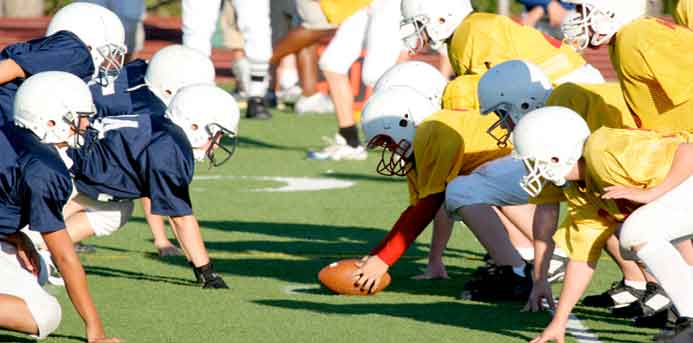Last December, Cincinnati Bengals receiver Chris Henry died after falling out of the back of a pickup truck during a domestic dispute.
In 2007, pro wrestler Chris Benoit killed his wife and child before hanging himself.
After their autopsies, scientists discovered that both athletes suffered from chronic traumatic encephalopathy (CTE), a type of degenerative brain damage. The condition, which is caused by repeated concussions, leads to a loss in impulse control, depression, memory problems and dementia. Many experts suspect CTE played a role in their troubling behavior.
It’s not just pro athletes who need to worry about CTE and other brain injuries. The Centers for Disease Control reports that nearly one in ten high school athletes suffer from concussions, making sports second to car accidents as the leading cause of traumatic brain trauma among young adults.
“We always think of football when we think of brain injuries,” says Chris Nowinski, a former WWE wrestler and Arlington Heights native who is now the President of the Sports Legacy Institute an organization dedicated to sports-related brain injury research and awareness. “But anyone who plays contact sports, including soccer, hockey, lacrosse and basketball, is at risk,” he says.
We asked Dr. Gail Rosseau, a neurosurgeon at NorthShore University HealthSystem how to protect athletes from brain injuries. Here’s her advice:
Take collisions on the field seriously.
“15 percent of athletes in high school sports sustain concussions,” Rosseau says. “But only a fraction of those athletes ever receive treatment.” If your child receives a blow to the head, don’t allow a coach to tell him or her to “walk it off.” Numbness in the arms and legs can be symptomatic of permanent damage. Take your child to an ER for an immediate evaluation.
Urge coaches and referees to change the “win at all costs” mentality.
Most sports have rules designed to prevent head injuries. But rough play is so common, that many coaches and refs find them hard to enforce.
In football, for instance, spearing is a tackling technique in which players ram into each other with their helmets. The team of the offending player is penalized by a loss or gain in yards. The refs, Rosseau says, should enforce the penalty every time he or she spots the offense, even if they end up blowing their whistles the whole game.
“More importantly, coaches need to teach athletes not to ‘spear’ in the first place,” Rosseau says.
In cheerleading, there are height regulations for human pyramids. But they are rarely enforced. “Coaches should always also demand spotters be present,” Rosseau says. Last year, a 14-year-old cheerleader suffered a fractured skull when her teammates did not catch her during a stunt. Fortunately, she has recovered.
Take your child for a yearly physical.
Before the season starts, take your child to a doctor for a concussion check up. “That way, coaches can identify any children with pre-existing injuries,” she says.
Practice and perform on soft surfaces when possible.
According to Rosseau, nearly 90% of cheerleading injuries were performed on wooden floors or fake grass. “Cheerleaders usually perform on hardwood floors or on the football field,” she says. “They should perform on mats with cushioning.”
The take home lesson? To protect the head, always use the brain. For more tips, visit Think First and the Brain Injury Research Institute.

